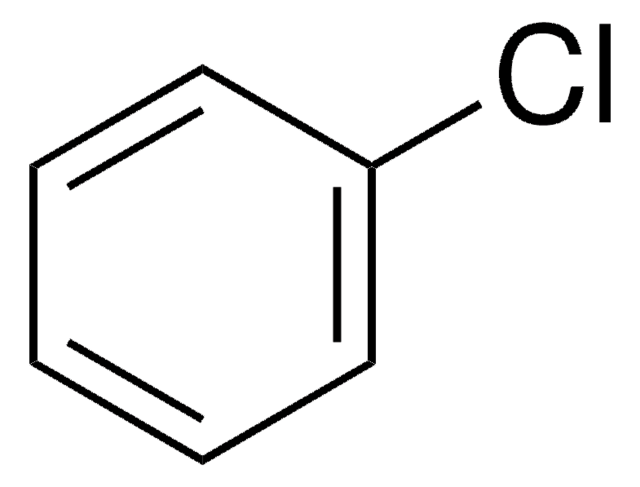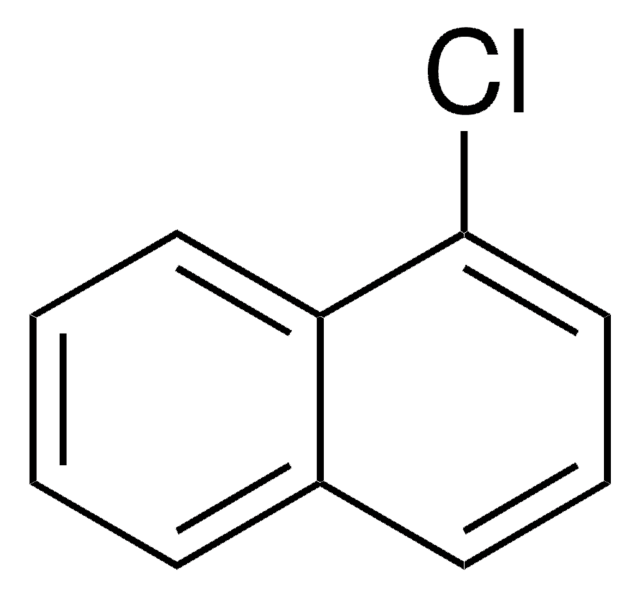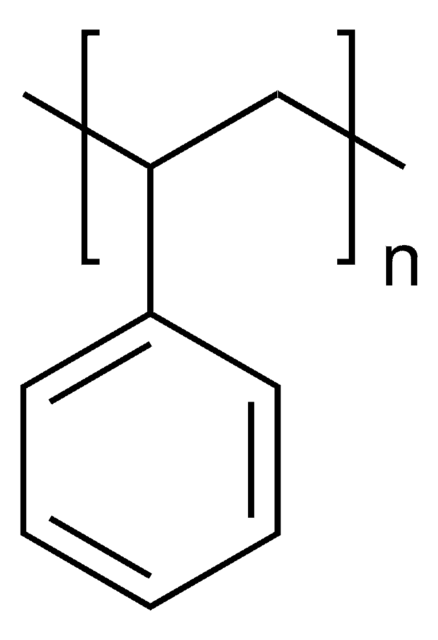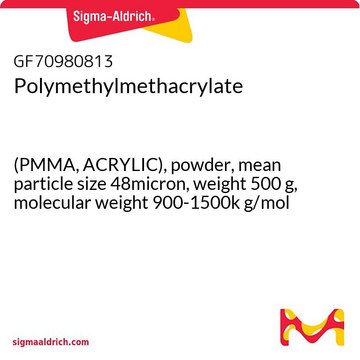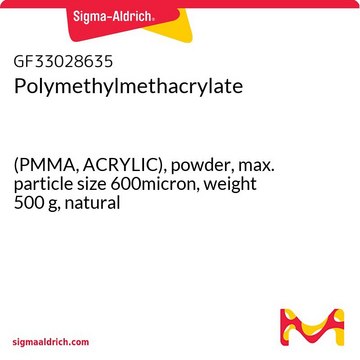Wichtige Dokumente
200336
Poly(methylmethacrylat)
average Mw ~15,000 by GPC, powder
Synonym(e):
PMMA, Polymethacrylsäuremethylester
About This Item
Empfohlene Produkte
Form
powder
Qualitätsniveau
Selbstzündungstemp.
580 °F
Mol-Gew.
average Mw ~15,000 by GPC
Übergangstemp.
Tg (DSC) 105 °C (midpoint)
Löslichkeit
dichloromethane: 25 mg/mL, clear to hazy
Dichte
1.200 g/cm3
InChI
1S/C5H9O2/c1-4(2)5(6)7-3/h1-3H3
InChIKey
PMAMJWJDBDSDHV-UHFFFAOYSA-N
Suchen Sie nach ähnlichen Produkten? Aufrufen Leitfaden zum Produktvergleich
Verwandte Kategorien
Allgemeine Beschreibung
Anwendung
- In hybriden optischen Dünnschichten aus PMMA und Titandioxid
- In PMMA/Polystyrol/Ton-Nanoverbundstoffen
- In PMMA/Polyurethan/Kohlenschwarz-Nanoverbundstoffen für Methanol-Brennstoffzellen
- In Acrylglas
- Als Implantat in chirurgischen Spezialanwendungen
- Als Spacer möglich.
Lagerklassenschlüssel
11 - Combustible Solids
WGK
nwg
Persönliche Schutzausrüstung
Eyeshields, Gloves, type N95 (US)
Hier finden Sie alle aktuellen Versionen:
Besitzen Sie dieses Produkt bereits?
In der Dokumentenbibliothek finden Sie die Dokumentation zu den Produkten, die Sie kürzlich erworben haben.
Kunden haben sich ebenfalls angesehen
Artikel
Professor Aran (Claremont University, USA) thoroughly discusses the engineering of graphene based materials through careful functionalization of graphene oxide, a solution processable form of graphene.
Developed in the last several years, fluorescence quenching microscopy (FQM) has enabled rapid, inexpensive, and high-fidelity visualization of two-dimensional (2D) materials such as graphene-based sheets and MoS2.
We will explore the technological advances that have contributed toward the progress of 3DP of tissue engineering scaffolds, current materials used to create 3DP scaffolds, and the challenges that remain.
Self-assembled monolayers (SAMs) have attracted enormous interest for a wide variety of applications in micro- and nano-technology. In this article, we compare the benefits of three different classes of SAM systems (alkylthiolates on gold.
Unser Team von Wissenschaftlern verfügt über Erfahrung in allen Forschungsbereichen einschließlich Life Science, Materialwissenschaften, chemischer Synthese, Chromatographie, Analytik und vielen mehr..
Setzen Sie sich mit dem technischen Dienst in Verbindung.
